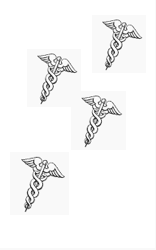
By KIM BELLARD
Crises — like our current COVID-19 pandemic — force people to come up with new solutions. They slash red tape, they improvise, they innovate, they collaborate, they cut corners. Some of these will prove inspired, others will only be temporary, and a few will turn out to be misguided. We may not know which is which except in hindsight.
I covered some of these in a previous article, but let me highlight a few:
- Hospitals: We’re building new hospitals, such as in convention centers, to address the expected shortage of beds. Hospitals are also coordinating where to send which types of patients.
- Testing: We’re creating drive-through testing centers in parking lots and elsewhere.
- Telehealth: We’ve loosened the restrictions on telehealth, improving reimbursement and rules about when it can be used.
- Coverage: We’re trying to ensure that deductibles/copayments do not pose barriers to people getting tests and treatment, even for those without insurance.
- Clinicians: We’re looking for clinicians everywhere we can — allowing licensed ones from other states to practice, letting people who were health care professionals in other countries practice here, calling retired ones back into service even if their license had expired, even letting almost-graduated medical professionals start practicing.
- FDA approvals: The FDA is using its “emergency use guidance” authorization to start allowing use of drugs and other treatments much quicker, and with much less evidence, such as for hydroxychloroquine, diagnostic testing, and ventilators.













